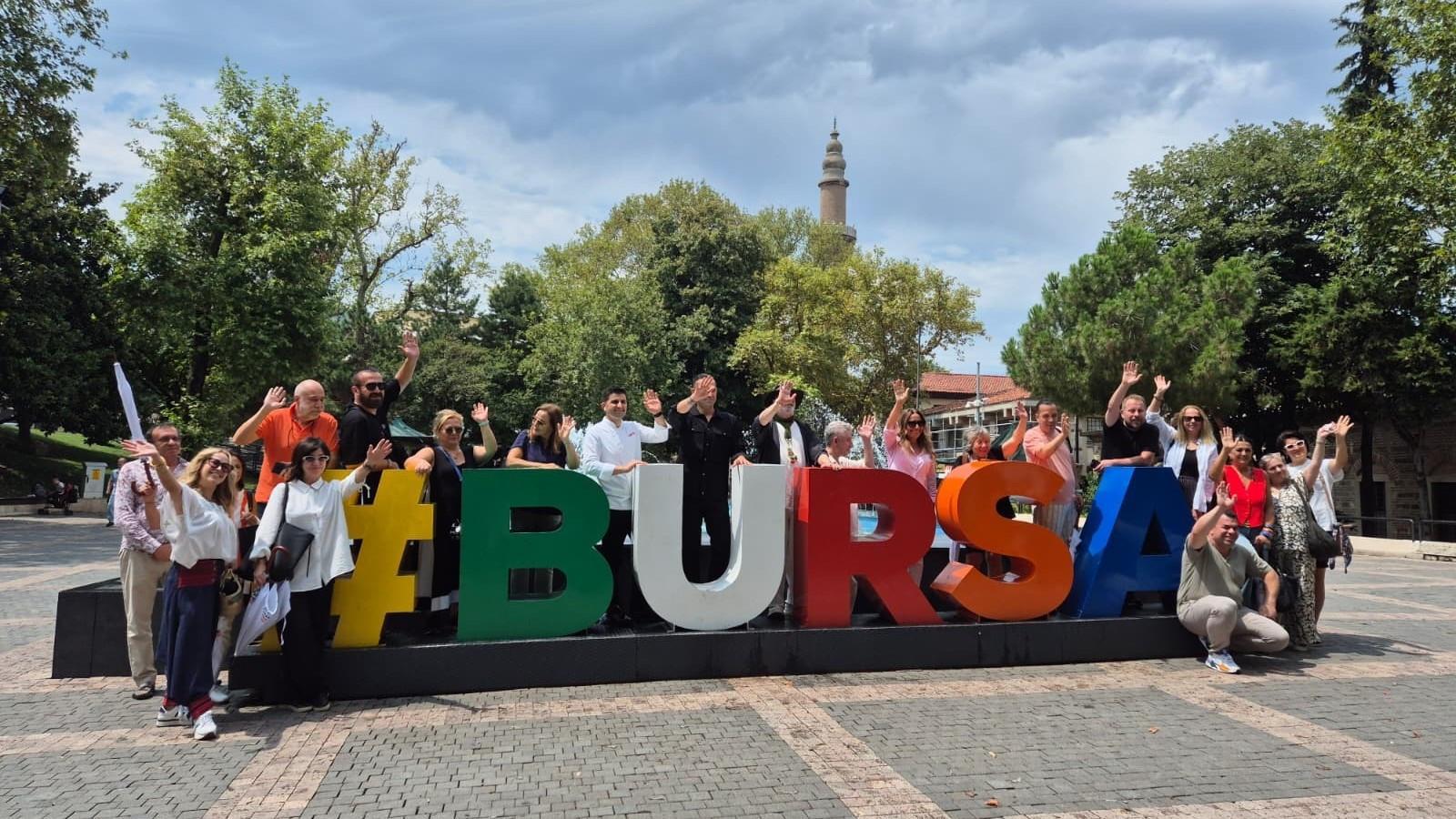
A visit to the city of Bursa is always dangerous if you are watching your weight. A recent day-trip invitation for the press trip was both tempting and alarming. The occasion was to explore the city’s culinary treasures before the forthcoming Bursa Gastronomy Festival, which will take place on September 26-28. The moment I received the invitation from Mayor Mustafa Bozbey, I changed all my plans and diverted my program towards Bursa, as if captivated by the alluring smell of the İskender Kebab, the town’s famous signature dish. However, I knew that wasn’t the only danger; there were many other culinary gems to remember, to savor and to rediscover in this once-imperial city with a rich history.
Nestled at the foot of the mighty Mount Olympus of Bithynia (Uludağ), the old city still reflects the grandeur of its imperial days. Bursa was the second capital of the Ottoman Empire. After handing over the flag to Edirne, the third capital before Istanbul, it continued to flourish as an important center for silk and textile trade. Today, it's a covered bazaar and numerous old “han” bazaar buildings are still bustling. Bursa still retains its Ottoman heritage, with its covered bazaar and several “han” buildings dedicated to commerce remaining bustling. At the same time, the city is a growing regional center with a strong automotive industry and textile production, and also a home to many food brands that were born here.
The first edict of food standards
One notable aspect of Bursa is that, since the early Ottoman times, the city has always been regarded as a culinary capital. Interestingly, the earliest detailed information about Ottoman-era foods comes from Bursa. Thanks to the Bursa Edict of Standards, issued in 1502 by Sultan Bayezid II, we have detailed specifications for every food item to be sold in the city’s markets. This document is considered the world’s first standard law for markets and bazaars. It established the standards and prices for every product sold in the market, from fruits and vegetables to bread and pastries. All the goods sold in the marketplace were scrutinized to meet the required standards and prices were arranged according to the quality of products. The list is long. In addition to fresh fruits and vegetables, Bursa grocery stores also sold honey, butter, sesame oil, dried fruits such as apricots, quinces, plums, grapes, and figs, “köfter & pestil” fruit leathers, almonds, molasses, walnuts, hazelnuts, starch, and various cheeses. Clearly, the Bursa market was an important center for the finest produce, where the best products of every kind could be found, and most of which were eventually sent to Istanbul.
Köfte, Kebab and Beyond
Bursa is commonly associated with perhaps the most famous of all kebabs, İskender Kebap, which consists of slivered pieces of döner kebab arranged as a layer on puffy pide flatbread wetted with a little tomato sauce and doused with a generous helping of sizzling melted fresh butter. It is dangerously tasty, hard to resist and a must-try dish when in Bursa. There are similar cousins of the dish made with meatballs, such as Kayhan köfte, equally seductive. The city also has a variety of baked products. One famous round flatbread is “cantık” which can be topped with minced meat or cheese. It is the city’s answer to “pide,” which in turn is Türkiye’s answer to pizza. When talking about pide, the city excels in the variations, especially “tahanlı or tahinli pide,” a tahini-topped sweet variety that is mind-blowingly tempting. When the round pizza-like dough comes out of the oven, the sugary tahini filling is still wobbly. It is almost like a fondue dip, and people dunk sesame-studded simit into the warm goodness. The simit is also fresh from the oven, chewy inside, crunchy outside. It is crazily delicious and again, very, very dangerous.
Of peaches and pears
When visiting Bursa, the list of things to taste is a long one. The city is also famed for its sweet delights, especially for candied chestnuts. The bakeries and patisseries always have high-quality produce, in case you ever feel hungry, which is unlikely in a city full of culinary attractions. Above all, Bursa and its surroundings have always been known for their luscious fruits, especially peaches, pears, cherries, mulberries and black figs. The fertile plains stretching from the foothills of Mount Olympus have always been ideal for fruit orchards. Bursa peach is almost like a trademark in Türkiye, but its pears are also phenomenal. The legendary 17th-century Ottoman traveler Evliya Çelebi took his first-ever voyage to Bursa. He first visited the city at the age of 29, secretly escaping from his father in Istanbul. In a way, Bursa was Evliya’s first love. Here, he got his first taste for travel, and apparently his first taste for good food and fruits, and then from here he set out to explore faraway lands. He wrote extensively about the fruits of Bursa, noting that there were 40 varieties of pears, all huge, juicy and delicious.
Bursa has a rich culinary heritage full of authentic flavors and unmissable food places. A trip here is worth it just to experience the delicious flavors. Mark your calendars for Sept. 26–28 and head to Merinos Park for the food festival. While you’re there, be sure to visit the city center and trace the legacy of the first food standards by strolling through Tuz Pazarı (the Salt Market). But beware — this city is dangerous if you’re on a diet!